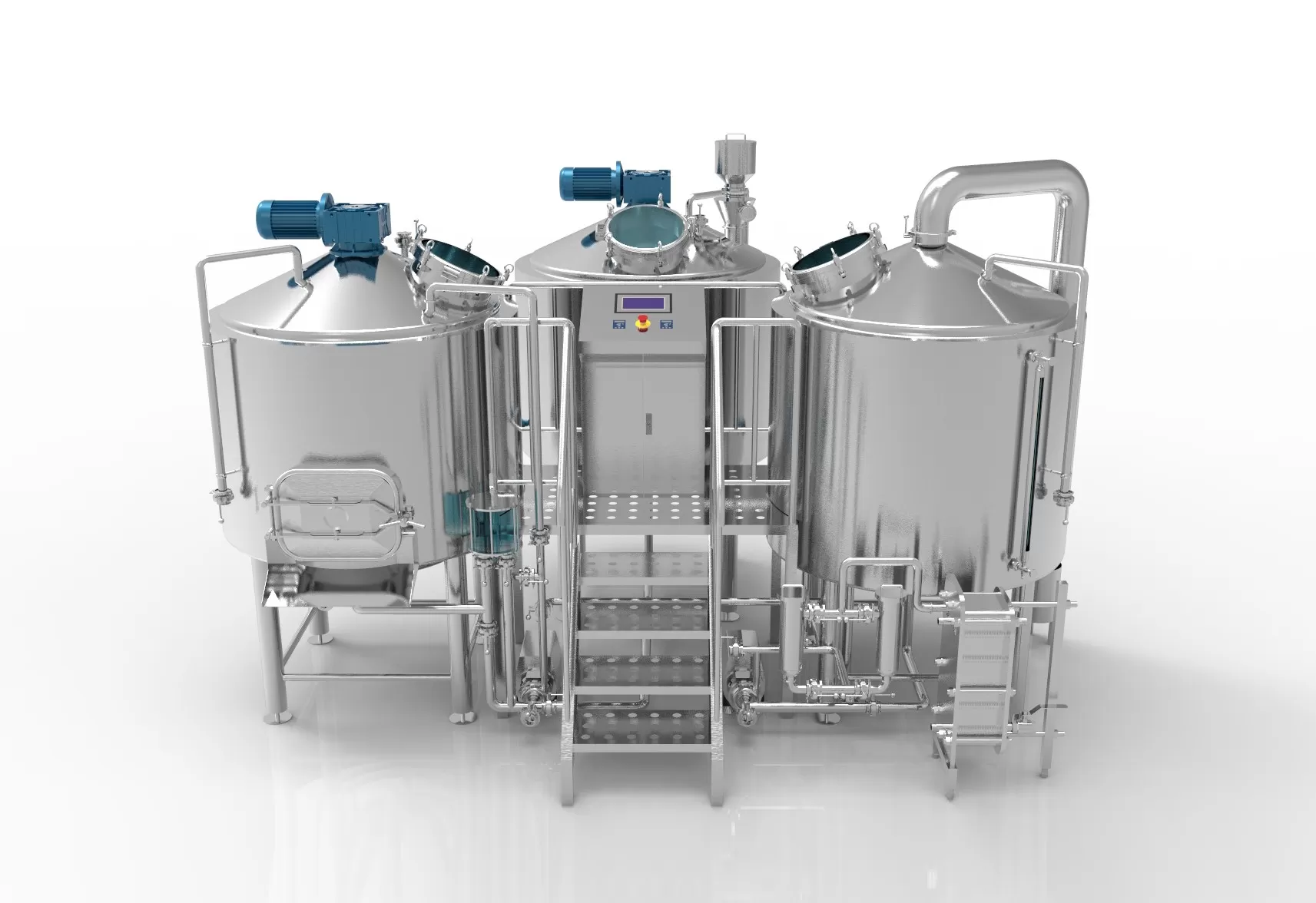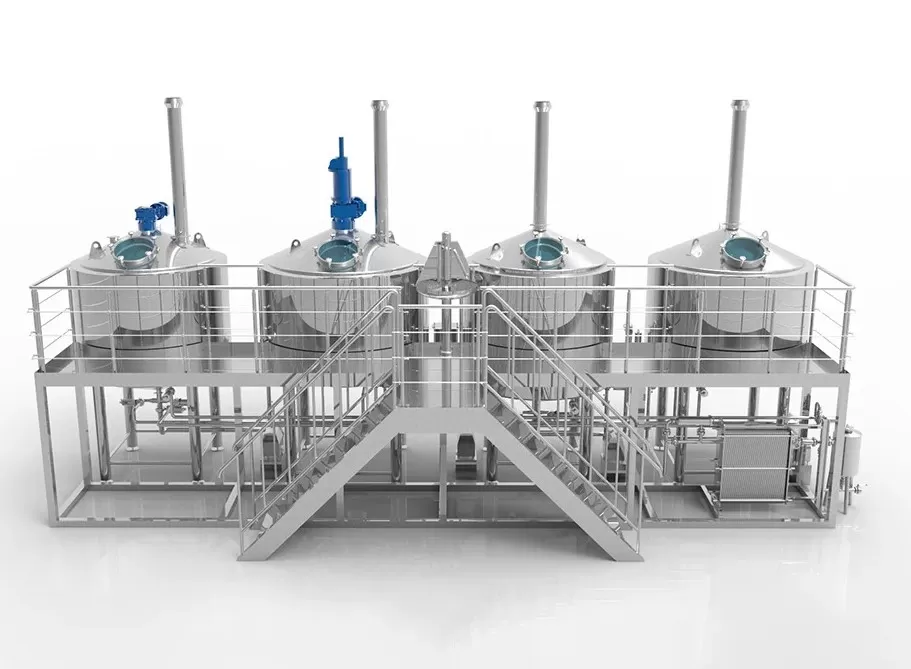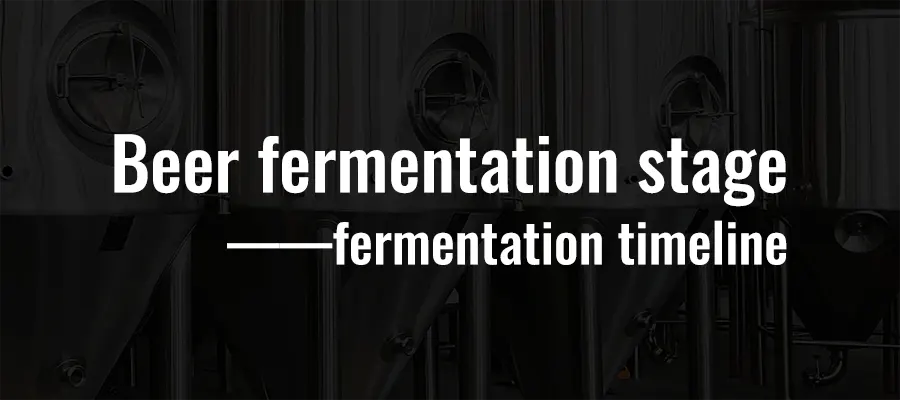Beer fermentation is the core of the beer brewing process. During the fermentation process, the wort made from raw materials is transformed into beer by yeast. Fermentation is usually divided into four phases: lag phase, active phase, stationary phase, and conditioning phase. Fermentation is the process by which yeast produces all the alcohol, aroma, and flavor compounds found in beer. The control of temperature, oxygen level, and the selection of yeast strains will significantly affect the production of aroma and flavor compounds produced during the fermentation process.
During the fermentation of beer, the sugar in the wort will be consumed, and new yeast cells will be formed with the production of ethanol, carbon dioxide, and flavor compounds. As professional brewers, we should control various elements of fermentation to facilitate the production of finished beer as planned. The key elements in the fermentation process are:
- Temperature
- Oxygen level
- Pitch rate
- Yeast selection
These key factors will affect the aroma and flavor compounds produced during the fermentation process. The purpose of this article is to study yeast and discuss how to ferment beer. Micet Group hopes to provide you with effective suggestions in the next brewing and brew delicious beer.
Fermenters & Bright Beer Tanks
Beer fermentation stage
Lag Stage
Once the yeast is put into the wort, it will enter what we call the lag phase. Although there are no obvious signs of fermentation at this stage, something is still happening. Yeast is absorbing the oxygen in the wort and produces sterols, which is essential for the reproduction and healthy growth of yeast. So, what is yeast?
Yeast is a single-celled eukaryotic microorganism and is classified as a member of the kingdom Fungi. The first yeast cell originated hundreds of millions of years ago. At present, humans have discovered at least 1,500 yeast cells. The yeast cell is a living organism, so it needs oxygen to maintain vital signs. This is why aeration of wort is very important in commercial brewing. Yeast cells need oxygen to grow and produce important cell wall components. In addition, yeast cells need to absorb oxygen, and they also need some vitamins and minerals needed for growth.
In modern brewing processes, all the vitamins needed for yeast growth can be found in high-quality malt. If your brewing recipe contains a lot of additives, you may need to add some yeast nutrients during the boiling process to help the yeast work. A simple brewing trick is to add some inactive yeast from the cooled cone-shaped beer fermentation tank during the boiling process of the nearest 10 minutes from the fermentation. If the nutrients in the wort are insufficient, this will provide the yeast with the minerals and vitamins needed for a healthy fermentation.
It is a good thing that you do not understand any activity in the later stages of the fermentation process. Yeast cells are gradually adapting to the environment and establishing the necessary growth for a healthy fermentation. You can reduce the lag period by increasing the pitch rates of the yeast, but each yeast cell may not be very healthy at the end of the fermentation. Over time, each re-throw will affect the fermentation process. Therefore, do not over-magnify the influence of pitch rates on fermentation.
Active Stage
Depending on the beer style, you can see obvious fermentation (a layer of foam) between 24-48 hours after pitching. At this time, the yeast is entering the anaerobic phase from the lag phase. Please note that for Kveik yeast, the lag period can be as short as 30 minutes.
The yeast cell count will increase rapidly during the active phase, and the yeast will start to consume the sugar in the wort. As the number of yeast cells increases, ethanol and flavor compounds are produced. Once the fermentation has dropped a few points (2 Plato or 0.07 SG) you can begin to brew most styles of beer. If the beer isn’t being spunded (for example, you plan to dry hop the beer), then you’ll see lots of gas being produced and escaping from the fermentation vessels (FV). This is the CO2 formed by yeast cells breaking down sugar. In addition, a thick layer of foam is formed on the top layer of the wort, which is called Krausen.
The active phase of fermentation usually lasts 4 to 8 days, depending on:
- Beer style
- Yeast used
- Pitch rate
- Fermentation temperature
Stationary stage
When the active phase is over, the growth rate of the yeast slows down and enters the static phase. Please note that most of the flavor and aroma compounds have been produced at this stage. These include fusel, ester, and sulfur compounds. At the beginning of the stationary phase, the beer is still considered a “green” beer because the beer flavor is not yet balanced.
During the stationary phase, the beer will be conditioned. At this stage the yeast re-absorbs the diacetyl produced during the fermentation process, hydrogen sulfide will also escape from the fermentor in the form of gas, Krausen descends, and the yeast begins to precipitate or flocculate. At this stage, you can hardly see any changes, and you must measure the gravity of the wort to detect the degree of attenuation. Once the gravity reading stabilizes at the same level within a few days, you know that fermentation is complete.
Please note: some yeast strains will flocculate before reaching final gravity. If this happens, you need to “wake up” the yeast back into the solution. To do this, let the beer quickly spray carbon dioxide through the bottom of the tank outlet and never use oxygen.
Conditioning stage
In the conditioning stage, the lager can be transferred to the bright tank (optional), and extra care must be taken with the entry of oxygen. When the temperature of the beer drops to 0~3℃, the yeast will continue to flocculate and settle. At the same time, because of the reduction of various undesirable flavor compounds in beer, beer normally slowly “matures”. However, ale beer will not benefit from long-term conditioning like a lager beer.
In ale beer, the desired flavor and aroma may decrease over time. For example, in IPA that requires a good hop aroma, aging will reduce the taste of hops. In addition, any oxygen entering at this stage will damage the overall quality of the beer and shorten the shelf life.
In this conditioning stage, we will see:
- Most of the yeast fall out of the beer (which can be dumped) making the beer clearer
- Haze forming proteins are formed and precipitate
- The beer becomes “smoother” as harsh flavors mellow out or reduced
- There’s a reduction in sulfur compounds, diacetyl, and acetaldehyde
- Overall flavor stabilization
Simple fermentation plan
In order to get the best results when fermenting beer, we recommend following this procedure.
- Just before adding the yeast, record your initial gravity sample
- Pitch your yeast and set the specified fermentation temperature
- Use hygiene habits to record your gravity every day
If temperature control is available to you… When your gravity is within 2–3 points of the expected final gravity, raise the temperature of your fermentation 3–4 degrees celsius. This is very important for the quality of beer, because it ensures that your yeast remains healthy and can clean up any undesired by-products produced during the fermentation process.
Continue to record your gravity every day. When the gravity stays the same for 3 days, you can be sure that the fermentation is complete.
The stage of beer fermentation is indeed a topic worth discussing. Understanding everything that happens during the fermentation process helps to make better brewing. Brewing beer is a very advanced subject. Over time, new technologies and new processes are constantly being created or evolved, so you need to continue to learn and progress.




